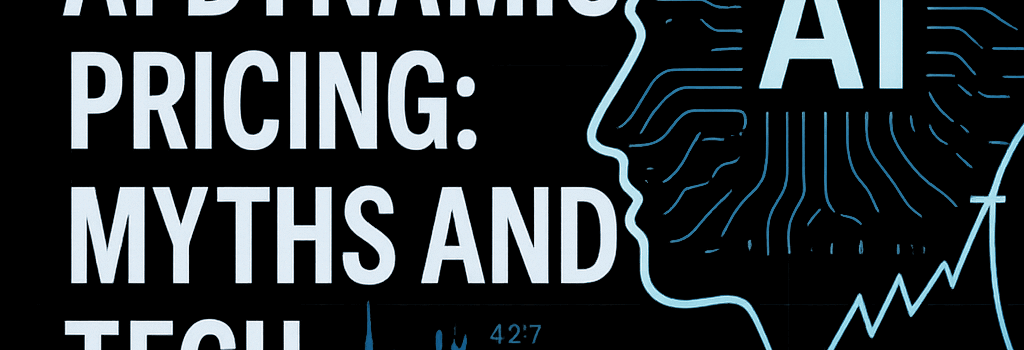Delta’s AI Dynamic Pricing: Myths and Tech Revealed

Delta’s Response to Allegations
In July 2025, Delta Air Lines faced a wave of criticism after reports suggested the carrier was using artificial intelligence (AI) to spy on individual users and inflate ticket prices. Lawmakers and consumer groups accused the airline of deploying surveillance-based, personalized pricing schemes that could unfairly target customers based on sensitive data.
“There is no fare product Delta has ever used, is testing, or plans to use that targets customers with individualized prices based on personal data,” insisted Peter Carter, Delta’s Chief External Affairs Officer, in a letter to Congress, aiming to set the record straight.
How Delta’s AI Pricing Really Works
Contrary to the lurid headlines, Delta’s AI-driven fare engine does not ingest or analyze customer-specific personal attributes such as browsing history, income bracket, or loyalty status. Instead, it leverages large-scale, aggregated data for dynamic yield management. Key input factors include:
- Historical and real-time route demand forecasts using time-series models (e.g., LSTM neural networks).
- Competitor fare and schedule changes, ingested via automated APIs from global distribution systems (GDS) like Sabre and Amadeus.
- Operational costs such as jet fuel price indices, crew availability, and aircraft utilization rates.
- External variables including seasonal events, holiday calendars, and known disruptions (weather, airspace closures).
Delta confirms about 3% of domestic inventory has run through the AI pricing model during its six-month pilot phase. The airline plans to scale this to 20% of all tickets by year-end, aiming to improve responsiveness across tens of thousands of routes.
Technical Architecture of the AI Pricing System
Delta’s platform is built in collaboration with Microsoft Azure. The core components include:
- Data Ingestion Layer: Real-time event streaming with Azure Event Hubs and Kafka clusters for high-throughput ticketing and competitive data.
- Feature Store: Delta Lake on Databricks stores preprocessed features such as origin-destination pairs, advance purchase window, and aggregated booking curves.
- Model Training: GPU-accelerated training using NVIDIA A100s on Azure Machine Learning, running gradient boosted decision trees (LightGBM) for price elasticity estimation, and reinforcement learning agents for yield optimization.
- MLOps Pipeline: Continuous integration via Azure DevOps and Kubeflow for versioning models, automated A/B testing, and canary rollouts into production.
- Serving Layer: Low-latency inference through Kubernetes pods and Azure Functions, enabling sub-200ms pricing decisions per fare query.
Comparisons with Other Airlines’ Approaches
Many carriers use third-party revenue management systems from vendors such as PROS, Amadeus, and Sabre. Delta’s in-house AI stack allows for deeper customization and quicker iteration:
- United Airlines: Relies on a hybrid model combining Sabre’s pricing engine with proprietary adjustments, limited by slower release cycles.
- American Airlines: Piloting AI modules via Amadeus’ Altéa Revenue Management; uses cloud-hosted microservices but trails in real-time scaling.
- JetBlue: Testing machine learning-based seat inventory predictions but has not yet integrated end-to-end dynamic pricing.
Regulatory Landscape and Oversight
In response to the controversy, U.S. senators introduced the Stop AI Price Gouging and Wage Fixing Act, underscoring concerns about opaque pricing algorithms. Meanwhile, the Federal Trade Commission (FTC) is updating its guidance on unfair or deceptive practices involving AI-driven personalization.
Across the Atlantic, the European Commission’s Digital Markets Act mandates transparency for platforms operating in the EU. Airlines selling tickets online may soon need to publish algorithmic summaries of dynamic pricing engines, bringing global implications for Delta’s rollout strategy.
Expert Voices
Dr. Jane Smith, Senior Data Scientist at OAG Aviation, notes:
“Delta’s focus on aggregated data and robust MLOps governance is industry-leading. Properly implemented, these systems can reduce waste and lower fares during off-peak windows without infringing on consumer privacy.”
However, privacy advocate Aaron Patel of the Consumer Data Rights Alliance warns:
“Even aggregated models require rigorous safeguards. We need third-party audits to ensure no inadvertent profiling slips through the pipeline.”
Future Innovations and Use Cases
Delta is already exploring adjacent AI applications, including:
- Crew Scheduling Optimization: Constraint-solving algorithms combined with reinforcement learning to minimize crew downtime and comply with FAA duty regulations.
- Flight Delay Predictions: Ensemble models ingesting weather radar, air traffic control feeds, and maintenance logs to alert passengers proactively.
- Intelligent Chat Assistants: Large language models (LLMs) integrated into the reservation system to handle complex itinerary changes and refunds in real time.
Key Takeaways
- Delta’s AI pricing leverages aggregated, anonymized data—no individualized price discrimination.
- Built on Azure’s scalable cloud infrastructure with end-to-end MLOps pipelines.
- Subject to heightened scrutiny under new U.S. and EU regulations demanding algorithmic transparency.
- Opportunities abound for Delta to extend AI across operational domains beyond pricing.
The Value of Transparency
Delta’s experience underscores a broader lesson for any AI deployment: proactive communication about data sources, model governance, and customer safeguards can mitigate backlash, drive stakeholder trust, and pave the way for innovation at scale.